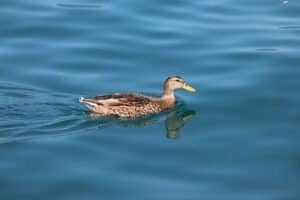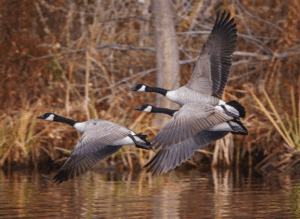Have you ever wonder that Where Do Ducks Live?, Ducks are birds that can be found almost everywhere in the world, except for Antarctica. They belong to the Anatidae family, which also includes swans and geese. Ducks live near water in ponds, lakes, and marshes, or swampy areas, all over the world. Ducks are omnivores and eat both plants and animals, including insects, worms, and leaves.
Ducks are highly adaptable animals and can thrive in a variety of habitats, from wetlands and freshwater rivers to urban parks and gardens. Their ability to survive in different environments makes them one of the most widespread birds in the world.
Table of Contents
Where Do Ducks Live? Types of Ducks and Their Habitats
Ducks are classified into two groups: dabbling ducks and diving ducks. Dabbling ducks, such as mallards and teals, are known for their ability to feed on aquatic plants by dipping their heads underwater while keeping their bodies afloat. They prefer shallow water habitats like marshes, ponds, and lakes.
On the other hand, diving ducks, such as mergansers and scaups, are adept at diving underwater to catch fish and crustaceans. They prefer deeper water habitats like rivers, estuaries, and oceans.
Apart from these two main groups, there are also perching ducks that live in trees near water bodies and sea ducks that thrive in the open sea. Some species, like eiders and scoters, can be found in both freshwater and saltwater habitats.
Ducks And Choosing Their Habitat

Ducks are opportunistic birds that choose their habitats based on availability of food, shelter, and protection from predators. Wetlands are ideal for ducks as they provide all three requirements. They also prefer areas with plenty of vegetation, such as reeds and rushes, where they can build nests and hide from predators.
While dabbling ducks prefer shallow water bodies with plenty of vegetation, diving ducks are more suited to deeper water habitats. Trees near water bodies provide a safe location for perching ducks to nest and roost. Sea ducks live in the open sea but come ashore during breeding season to nest on cliffs or islands.
Ducks Migration and Seasonal Habitats
Ducks are migratory birds, meaning they move from one place to another depending on the season. In colder regions, ducks migrate south during winter in search of warmer climates and food sources. During migration, some species make stops along the way to rest and feed before continuing their journey.
Ducks have been observed to return to the same habitats every year, which is known as site fidelity. This behavior helps them preserve energy and resources by returning to familiar and suitable habitats.
Where Do Ducks baby live?

Ducks build their nests on the ground, usually near water bodies. The female duck lays eggs in the nest and incubates them for about 28 days until they hatch. After hatching, the mother duck leads her ducklings to water within 24 hours. Ducklings stay with their mothers until they are old enough to fend for themselves.
Ducks may seem like simple birds, but they are well adapted to thrive in a variety of habitats. From shallow ponds to open seas, ducks have found ways to survive and flourish in their chosen abodes. Their ability to choose suitable habitats and adapt to different environments has made them one of the most successful bird species in the world.
A Quick Look On Baby Ducks And Their Natural Habitats
Some Baby Ducks And their Natural Habitats are below:
- Mallard ducklings: shallow ponds, lakes, marshes
- Merganser ducklings: deeper water habitats like rivers and oceans
- Perching ducklings: trees near water bodies
- Sea ducklings: open sea or rocky cliffs for nesting.
As the saying goes, “birds of a feather flock together”, but in this case, ducks of different feathers choose their habitats based on their unique needs and preferences. Next time you spot a duck, take a moment to admire its beauty and the amazing adaptability that allows it to thrive in its chosen abode.
Ducks and Urban Environments

With the increase in urbanization, many ducks have adapted to living in cities and towns. They can be found in parks, gardens, and even on busy streets. Some species, like the mallard, have become accustomed to living near humans and have lost their natural fear of people.
Unfortunately, this also puts them at risk of harm from human activities such as pollution and urban development. It is important to remember that ducks are wild animals and should not be fed or disturbed in their natural habitats.
Human Impact on Duck Habitats
Unfortunately, human activities such as urbanization, pollution, and habitat destruction have greatly affected duck populations. Wetlands, one of the most important habitats for ducks, are often drained or filled for agriculture or development purposes. This has resulted in a decline in duck populations and the loss of crucial habitats.
Conservation efforts, such as the creation of protected areas and wetland restoration projects, have been put in place to mitigate these impacts and preserve duck habitats for future generations.
Final Thoughts
Ducks are incredibly adaptable birds that can be found in a wide range of habitats around the world. Their unique ability to thrive in different environments has made them one of the most widespread and diverse bird families.
However, it is important for us to protect and preserve their habitats to ensure the survival of these remarkable birds. So next time you see a duck, take a moment to appreciate where they live and the incredible journeys they make every year.
Read Also: Do Ducks Eat Fish In Ponds?





